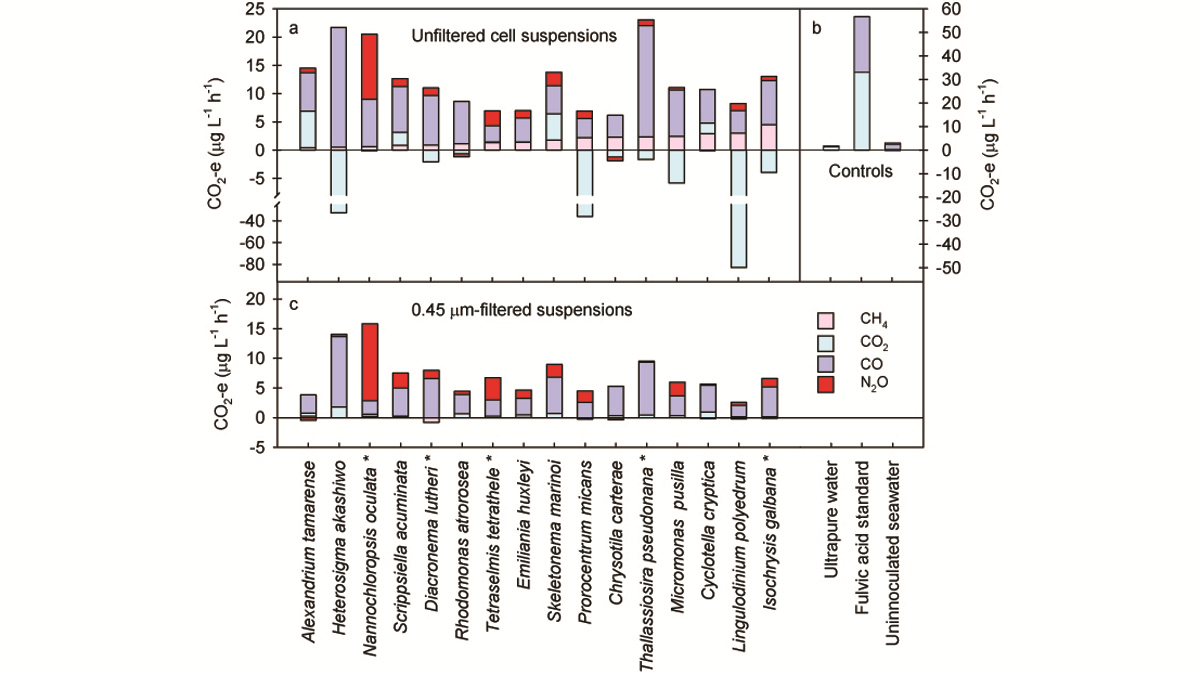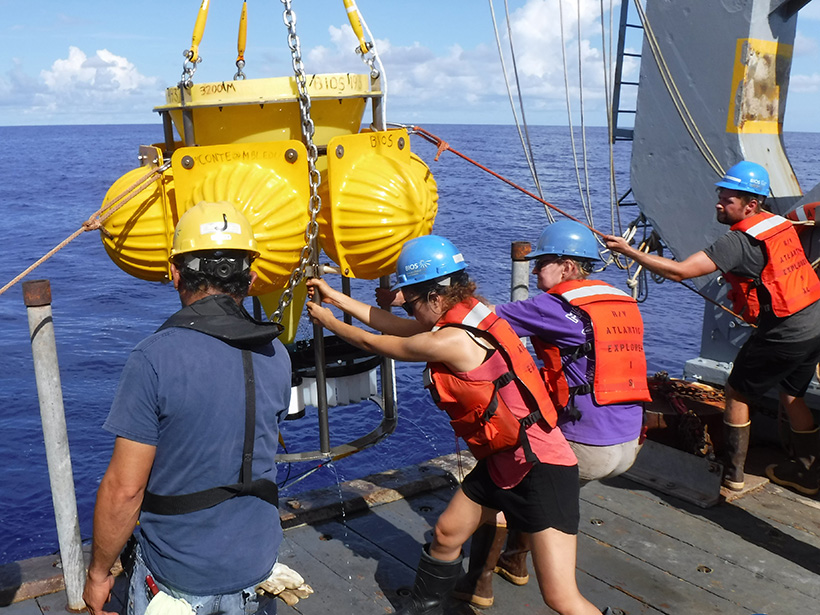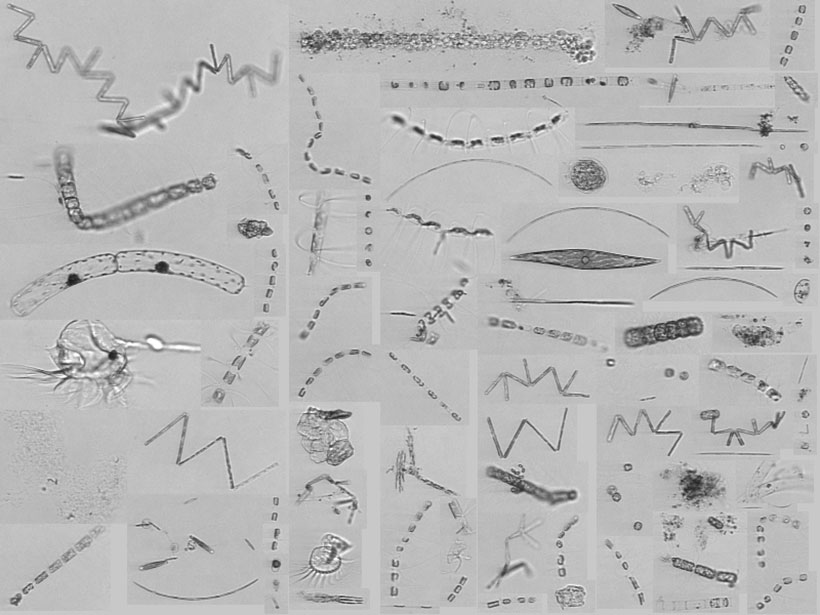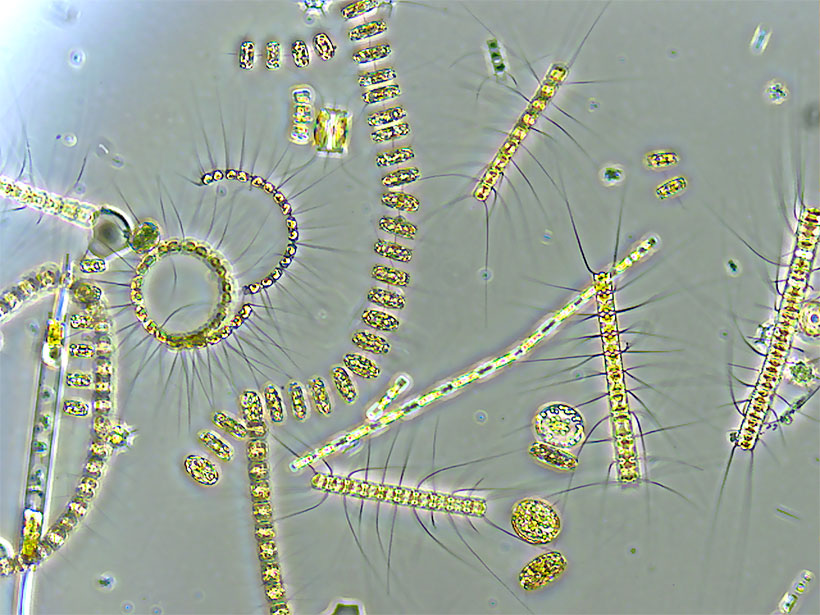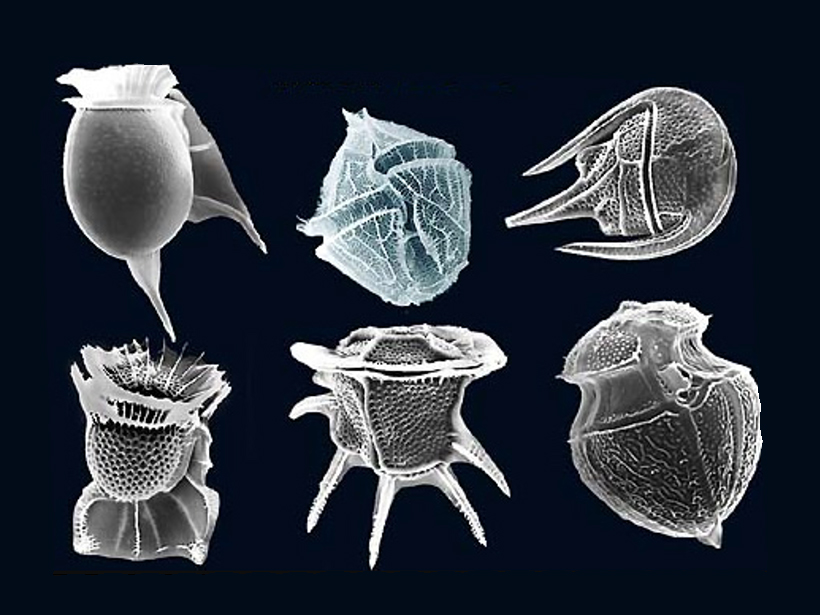Recent studies looking at carbon-sequestering microbes suggest we still have a lot to learn about the ocean’s biological carbon pump.
plankton
Phytoplankton as Emitters of Greenhouse Gases
Phytoplankton remove carbon dioxide from the atmosphere; a new study reveals that marine phytoplankton can also produce greenhouse gases when exposed to ultraviolet radiation.
Freshwater Mussel Shells May Retain Record of Alpine Snowpack
A new study explores a possible proxy for seasonal freshwater input that could elucidate changes in alpine snowpack as the planet warms.
El papel del fitoplancton de tamaño medio en la bomba biológica de la Tierra
Una nueva investigación revela que el nanoplancton podría tener una mayor influencia en el ciclo del carbono de lo que se pensaba.
Particles at the Ocean Surface and Seafloor Aren’t So Different
Despite occurring on different scales, flux measurements throughout the water column share log-normal probability distributions.
Gulf Stream Intrusions Feed Diatom Hot Spots
Previous research suggested that the intrusion of low-nutrient Gulf Stream water into the Mid-Atlantic Bight would reduce productivity, but a new study finds that it can also lead to chlorophyll hot spots.
Species of Feces Help Phytoplankton Feed Itself
The unicellular plants more readily take up iron in the presence of salp feces than in krill feces, an experiment in Antarctica reveals.
First Worldwide View of a Key Phytoplankton Proxy
New insights into the dynamics of ocean features known as deep chlorophyll maxima set the stage for better understanding of their role in carbon cycling.
The Alkalinity Trap at the Bottom of the World
Tiny microorganisms in the Southern Ocean affect the way the rest of the world’s seas respond to carbon dioxide.
The Role of Midsized Phytoplankton in Earth’s Biological Pump
New research finds that nanoplankton may have a larger influence on carbon cycling than previously thought.


